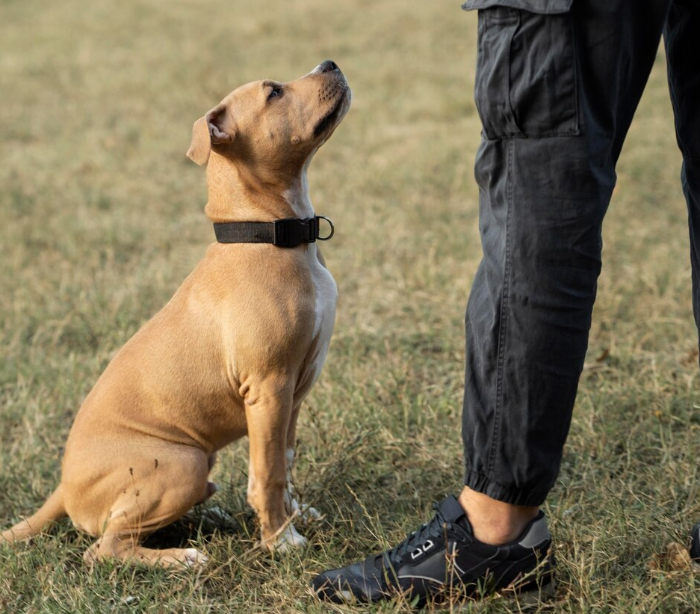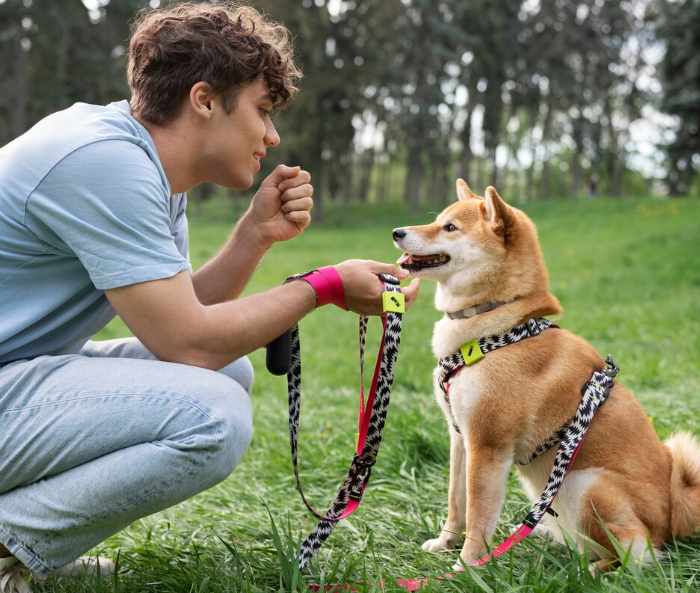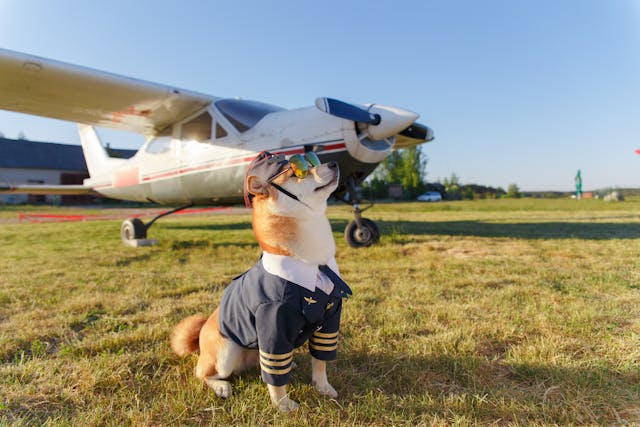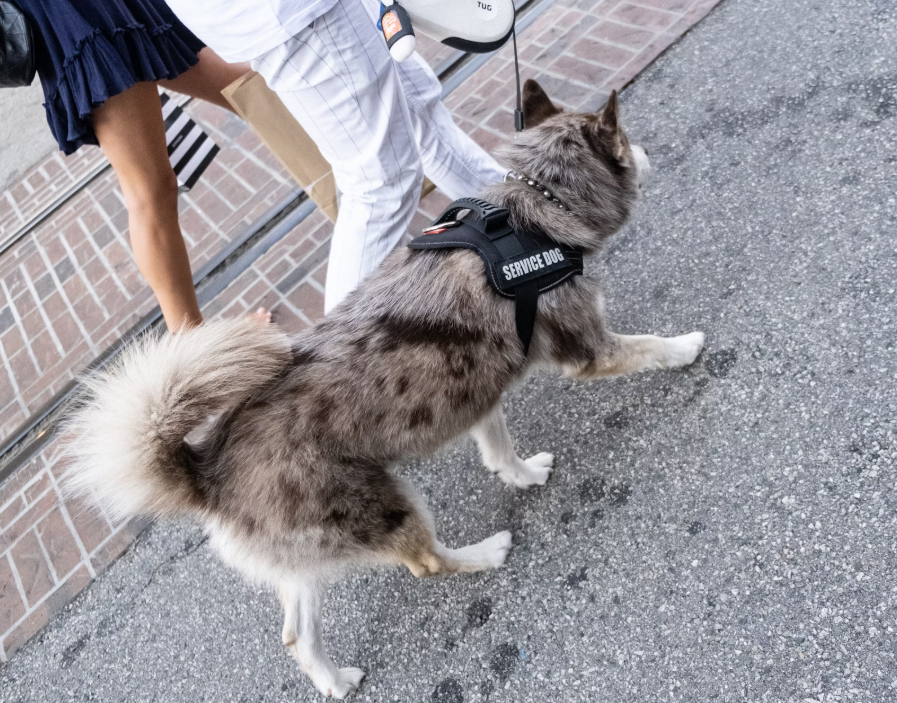Help can come in many forms: a kind word, a steady hand, or a moment of understanding when the world feels overwhelming. But sometimes, help arrives on four legs, with a wagging tail and eyes full of purpose!
Assistance and companion dogs aren’t just pets, but trained helpers, ready to support us whenever we need them. They often carry burdens that many of us cannot see.
For someone struggling to walk without stumbling, manage a panic attack, or simply feel safe in their own skin, a helper dog isn’t just helpful, but life-changing!
These dogs deserve our recognition, and today’s article is dedicated to their invaluable role in our lives.
Types of Helper Dogs
While the term 'helper dog' is sometimes used broadly, there are key distinctions between the various roles these dogs fulfill. To better understand how they support individuals, we first need to clarify the differences between them.
Assistance/Service Dogs
These dogs undergo specialized training to learn to perform specific tasks directly related to a health condition, whether physical or mental. As the name suggests, assistance/service dogs can only be dogs.
Other types of domesticated species, like cats, birds, or rabbits, are not accepted. If you live in or travel to the US, though, you may want to know that some US states recognize miniature horses as well.
Assistance dogs are considered medical equipment and not pets, and are entitled to public access and housing accommodations.
Emotional Support Animals (ESAs)
Emotional Support Animals, on the other hand, are not trained to perform specific tasks, however, they provide comfort and companionship by being present only. Many individuals with mental health issues or physical conditions that have impacted their mental health as well benefit from ESAs.
These animals can be all types of domesticated species, including dogs, cats, guinea pigs, rabbits, birds, etc. They are typically prescribed by mental health professionals as part of a treatment plan to help alleviate symptoms of anxiety, depression, PTSD or other mental health issues.
Therapy Animals
Similarly to ESAs, therapy animals can also be various types of domesticated species. However, dogs are the most common type of therapy animal.
Therapy dogs/animals are typically used in structured programs where they work alongside a handler to provide comfort and companionship to individuals in settings like hospitals, nursing homes, and schools. They are not trained to perform specific tasks, but have a positive effect on people’s mental health and contribute to improving their social and learning skills.
Through engaging in activities, such as grooming, petting, walking, etc., individuals also improve their mobility and recover from injuries more quickly.

Training Differences Based on the Role
Not all helper dogs are trained equally or for the same purposes. The training process varies based on the roles these animals play.
While all types of support animals can provide comfort and companionship, only assistance dogs are required to undergo specialized training and perform specific tasks, directly related to a disability.
Emotional Support Animals (ESAs)
ESAs provide comfort and companionship through their presence, which doesn’t require them to undergo specialized task training. However, they need to have excellent manners around other animals and people, so basic obedience training and socialization are still necessary.
Therapy Dogs
Therapy dogs, on the other hand, are trained to interact gently and calmly with a wide range of people in clinical, educational, or care settings. They often visit hospitals, schools, or nursing homes and provide comfort and companionship.
Similar to ESAs, they also need to master basic obedience and be well-socialized. Based on the specific facility, additional training through an affiliated organization may be required for therapy teams.
Assistance/Service Dogs
Their status as medical equipment requires these dogs to undergo specialized training that includes three key elements:
1. Basic Obedience Training & Socialization;
2. Specific Task-based Training;
3. Public Access Training.
We’ll take a closer look at each of these stages in the next paragraph.

Assistance Dog Training
Early Socialization and Foundation Skills
If you’ve ever wondered when to start training and socializing your dog, the answer is simple: as soon as they enter your home. However, please remember that puppies should stay with their mother until they are at least 8 weeks old, as this time is crucial for their early social development and learning important behaviors from their siblings and mom.
This early training phase focuses on building confidence and emotional stability through structured socialization. Puppies are exposed to various environments, people, and everyday scenarios which help prevent fearful reactions in the future.
Some essential behaviors and cues that pups learn during this phase are:
- Basic manners and impulse control;
- Sitting on command;
- Waiting on command;
- Walking calmly on a leash;
- Responding to their name (Recall);
- Potty training and crate training.
Though the training might look simple at this stage, it forms the foundation for everything that follows.
Task-Specific Training
It’s essential that the dog has mastered basic obedience before engaging in advanced, task-specific training. As we’ve already explained above, only assistance/service dogs undergo specialized task training, as they do specific work / perform specific tasks related to the individual’s disability.
The tasks a service dog can be trained to perform vary greatly depending on the individual. These can include, but are not limited to:
Guiding Tasks: guiding individuals with visual impairments.
Mobility Tasks: retrieving dropped items, opening doors, helping with balance, collecting laundry, etc.
Medical Alert Tasks: detecting changes in their owner’s scent, such as shifts in blood sugar levels, heart rate, or neurological changes before a seizure, and alerting them by exhibiting a specific behavior.
Hearing Tasks: alerting the owner to specific sounds in their environment, such as a ringing phone, doorbells, alarms, etc.
Training for these tasks should be conducted step-by-step and preferably using positive reinforcement. This involves rewarding the dog with their favorite treats, toys, or playtime, along with praise. Positive reinforcement has proven to be an effective way to teach dogs new behaviors and tasks, while also strengthening the bond with them.
While task training begins in an environment free of distractions, such as a quiet room at home, it should gradually transition to locations with more distractions. This process, called generalization, helps ensure that the dog will exhibit the desired behavior and perform the specific tasks in all types of situations and environments.
Public Access Training
The next step in the training process involves public access training. If a service dog misbehaves in a public setting, they may be denied access to the premises.
Public access training ensures the dog can reliably support their handler in busy environments and ignore distractions. This type of training typically involves:
- Remaining calm in crowded areas like shops or stations;
- Ignoring food, loud noises, other animals, and strangers;
- Navigating spaces such as lifts, escalators, and buses;
- Settling quietly in restaurants, classrooms, or workplaces.
Public access behavior isn’t just about following commands, but about the dog’s ability to stay calm, and focused in everyday real-life situations.

Handler-Dog Bonding & Team Training
A great advantage of owner/self-training a service/assistance dog is the strong bond that already exists between the handler and the dog.
However, if an individual applies for or purchases an already trained dog, they will need to learn how to work together effectively as a team. Team training involves:
- Understanding how to give cues and read the dog’s behavior;
- Building trust and communication;
- Practicing at home and in public;
- Maintaining progress and remaining consistent.
Many organizations conduct final assessments or certifications to ensure the dog is not only well-trained but that the partnership functions effectively under real-life conditions.

Legal Rights and Public Access Differences
The legal recognition and protections granted to helper dogs vary depending on their type, which is why we first clarified the differences between them.
Assistance/Service Dogs
Service dogs, usually referred to as assistance dogs in the UK and the EU, are perceived as medical equipment and not pets. They are protected under laws such as the Equality Act 2010 in the UK and various disability rights regulations across the EU.
Due to their legal status, they are allowed to accompany their handlers to public places, including shops, stores, hotels, public transport, and workplaces, including settings with a ‘no pets’ policy.
Additionally, assistance/service dogs are entitled to housing and may not be denied accommodation, even if a housing provider doesn’t permit pets on the premises.
Last but not least, these dogs may accompany their handlers/users in aircraft passenger cabins. If you have an assistance dog and plan to travel with them, please make sure to review the assistance dog policy of the airline of interest ahead of time and ensure compliance. When it comes to flying, airlines have different policies, which typically depend on local laws, specific routes, and the type of training the dog has undergone.
Emotional Support Animals
On the other hand, emotional support animals (ESAs) do not have the same public access rights and are typically not permitted in places with a ‘no pets’ policy.
However, if an individual with an ESA contacts the venue in advance, explains their situation, and is prepared to provide medical documentation supporting their need, management may choose to allow access. Ultimately, the decision is at the discretion of the business owner, as there is no legal obligation to accommodate companion animals.
The same applies to housing providers who are not legally required to accommodate ESAs if they enforce a “no pets” policy.
However, we advise both tenants and landlords to review the information below to better understand their rights and responsibilities, especially when it comes to pet accommodation.
Tenant Fees Act 2019: Guidance for tenants
Tenant Fees Act 2019: Guidance for landlords and agents
In contrast to Europe, ESAs in the US are protected under the Fair Housing Act and are entitled to housing. They are not protected under the Americans with Disabilities Act (ADA), though, and may be excluded from public places.
The term “assistance animals”, in the context of housing in the US, is an animal that “works, provides assistance, or performs tasks for the benefit of a person with a disability, or that provides emotional support that alleviates one or more identified effects of a person’s disability. An assistance animal is not a pet.”
Therapy Dogs
These dogs have the least legal protection, as they are considered ‘volunteers’ rather than service animals, and their presence in public is subject to the permission of the venue.
Moreover, each designated facility has its own policy regarding the acceptance of therapy teams. If you have a therapy dog and would like to visit with them at a school, hospital, nursing home, or another type of setting, you should contact the management first. They will explain what requirements you and your dog have to meet as a team to participate in animal-assisted therapy.
Training a support (helper) dog truly is a life-changing journey. It helps individuals regain their confidence and independence and fully embrace life, while building an unbreakable bond filled with trust and companionship.













